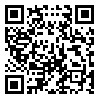1. Allahverdipour H, Bazargan M, Farhadinasab A, Hidarnia A, Bashirian S. Effectiveness of skillbased substance abuse intervention among male adolescents in an Islamic country: Case of the Islamic Republic of Iran. J Drug Educ. 2009; 39: 211-22. [
DOI:10.2190/DE.39.2.g] [
PMID]
2. Sadock BJ, Sadock VA. Comprehensive textbook of psychiatry. 2rd ed. Philadelphia: Lippincott Williams and Wilkins; 1999: 924-5.
3. Tofani H, Javanbakht M. Comparison adoption styles and attitudes among drug abusers and control Groups. J Sabzevar Univ Med Sci. 2003; 9: 70-9.
4. Sajjadi M, Shariatifar N, Matlabi M, Abbasnezhad AA, Basiri K, Nazemi H. The rate of knowledge and attitude toward psychoactive drugs and its abuse prevalence in Gonabad University students. Ofogh-e-Danesh. 2009; 15: 58-65.
5. Leung KS, Abdallah AB, Copeland J, Cottler LB. Modifiable risk factors of ecstasy use: Risk perception, current dependence, perceived control, and depression. Addict Behav. 2010; 35: 201-8. [
DOI:10.1016/j.addbeh.2009.10.003] [
PMID] [
PMCID]
6. Schydlower M. Substance abuse, a guide for health professional's Pediatrics, dedicated to the health of all children. 2rd ed. Illinois: American Academy of Pediatrics; 2002: 235.
7. Seyyed Fatemi N, Khoshnavaye Foomani F, Behbahani N, Hosseini F. Assertiveness skill and use of ecstasy among Iranian adolescents. Fundamentals of mental health. 2007; 10: 265-72.
8. Hadadi R. On the comparison of the therapeutic effects of matrix treatment on severity of addiction and mental health between female and male methamphetamine abusers. Res Addict. 2015: 8: 57-69.
9. Mokri Azarakhsh. Manual treatment of drug abuse stimulus: Based on the modified pattern quarter Matryks-Vyrastary. 4. 2013.
10. Taheri Nakhost H, Gilani Pour, Manual of psychological intervention on outpatient treatment of stimulant use disorders Matrix model: the leaves Nshrspyd, 2013.
11. Rawson R. An intensive outpatient approach for cocaine abuse treatment: The matrix model. J Substance Abuse Treat. 1995: 12: 117-27. [
DOI:10.1016/0740-5472(94)00080-B]
12. Marlatt G, Gordon J. Relapse prevention: Maintenance strategies in the treatment of addictive behaviors. New York: Guilford; 1985.
13. Rawson RA, Obert JL, McCann MJ, Mann AJ. Cocaine treatment outcome: Cocaine use following inpatient, outpatient and no treatment. NIDA Res Monograph. 1986; 67: 271-77. [
DOI:10.1037/e471922004-001]
14. Shoptaw S, Frosch D, Rawson R, Ling W. Cocaine abuse counseling as HIV prevention. J AIDS Educ Prevent. 1997; 9: 511-20.
15. Jafari Nejad M. The effectiveness of treatment based on outpatient deep matrix model and stages of change on improvement of self-regulation and self-efficacy of drug abstinence. Thought Behav Clin Psychol. 2015: 9: 47-56.
16. Jeanne L Obert, Michael J, Mc Cann, et al. The matrix model of outpatient stimulant abuse treatment: History and Descriptio: 2011.
17. Shoptaw S, Rawson RA, MC Cann MJ, Obert J. The matrix model of outpatient stimulant abuse treatment:Evidence of efficacy.J Addictive Diseases.1995.13:129-41 [
DOI:10.1300/J069v13n04_02] [
PMID]
18. Pates R, Riley D. Interventions for Amphetamine Misuse. United States: Blackwell publishing LTD. 2010.
19. Curran C, Byrappa N, McBride A. Stimulant psychosis: systematic review. Br J Psychiat. 2004, 185: 196-204 [
DOI:10.1192/bjp.185.3.196] [
PMID]
20. Ashouri A, Mohammadi N. The effectiveness of cognitive-behavioral group therapy on the improvement of coping skills and relapse prevention in addicted individuals. Iran J Psychiat Clin Psychol. 14: 281-88.
21. Tajeri B. The effectiveness of CBT in the reduction craving and relapse prevention among amphetamine abusers. Thought Behav Clin Psychol. 39: 27-36.
22. Turkcapar H, Kose S, Ince A, Myrick H. Beliefs as a predictors of relapse in alcohol dependence Turkish men. J Study Alcohol. 2008; 66: 848-51. [
DOI:10.15288/jsa.2005.66.848] [
PMID]
23. Frisch MB. Quality or life therapy. Trans Lated By: Khamse A. Tehran: Arjmand Press; 2011. In Persian. strength, functional ankle instability, comprehensive combined program.







